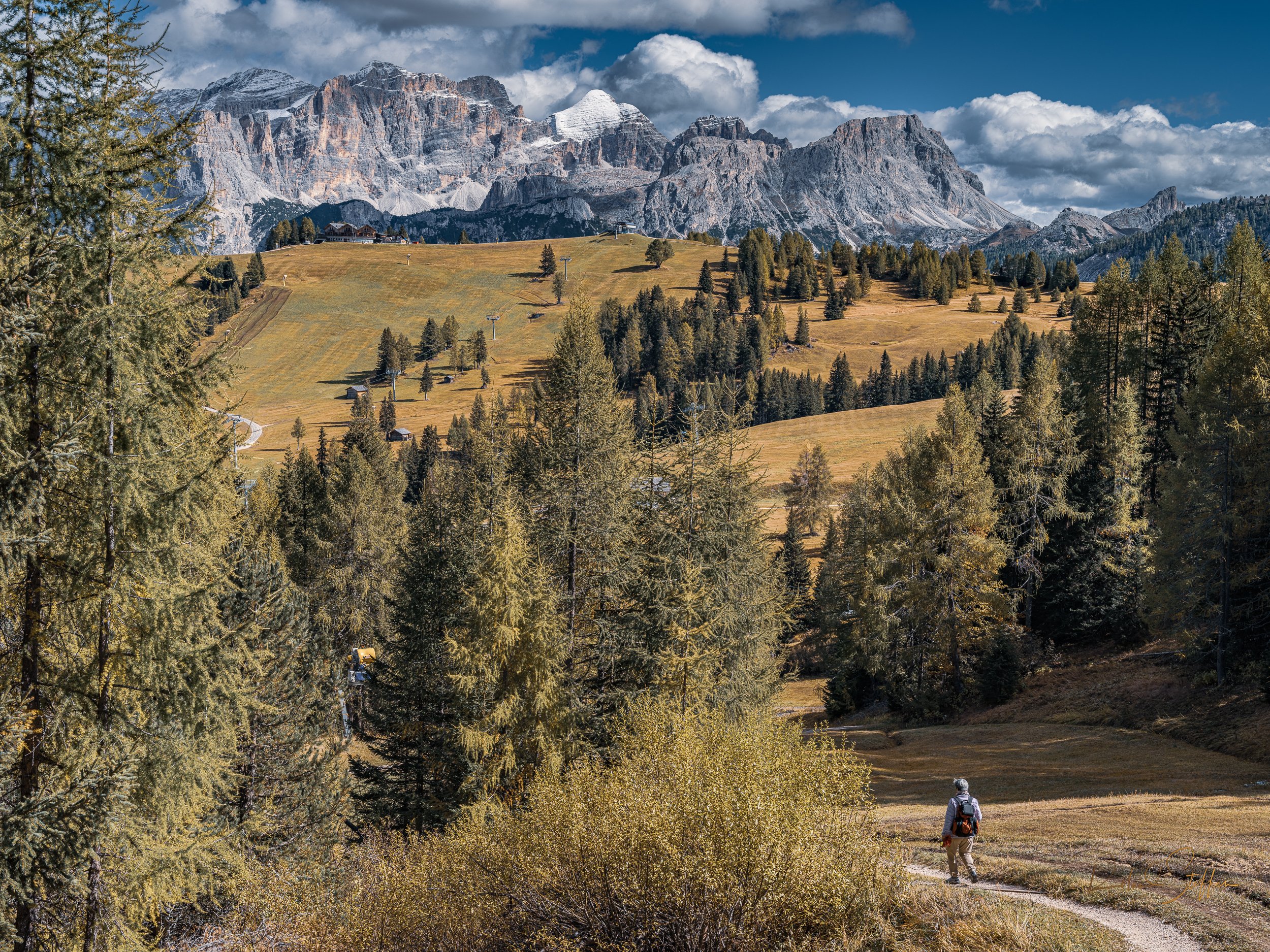Dolomites - the beauty of a rough landscape
Rough mountains and spectacular rock formations - this is how the Dolomites present themselves, a mountain range in the Southern Limestone Alps that was formed more than 200 million years ago.
Photographer: Roland Steffen - Gear: Fujifilm GFX100S with GF 23mm, GF 45-100mm, GF 100-200mm. Pictures not to be used without my explicit permission.
Gardena Pass
The Gardena Pass is a 2121 m high mountain pass in the South Tyrolean Dolomites. It connects Val Gardena with Val Badia and the municipalities of Selva Gardena and Corvara.
Passo Gardena (Grödner Joch), Dolomites, Italy - Photographer: Roland Steffen, Fujfillm GFX 100S, GF 45-100mm
The world-famous mountain group of the Dolomites is spread over the five Italian provinces of South Tyrol, Trentino, Belluno, Udine and Pordenone. The "Monti Pallidi" - the Pale Mountains - as the Dolomites are often called because of their dolomite rock, shimmer at sunset in a reddish light that makes the mountains seem almost unreal.
View from St. Christina in Gröden, Dolomites, Italy - Photographer: Roland Steffen, Fujfillm GFX 100S, GF 45-100mm
Due to their special beauty and geology, which offers a glimpse into various phases of the earth's history, the Dolomites were included in the World Heritage List on July 26, 2009. Particularly characteristic of this mountain group is the abrupt change between rugged cliffs and gentle alpine meadows. The Dolomites are also ideal for mountain sports - ten different Dolomite high altitude trails cross the mountain group, for example.
Cinque Torri
The Cinque Torri are a rock formation up to 2361 m s.l.m. high in the Ampezzo Dolomites on the stretch between the Falzarego Pass and Cortina d'Ampezzo. The Cinque Torri consist of steep towers that once formed a whole large boulder.
Cinque Torri, Dolomites, Italy - Photographer: Roland Steffen, Fujfillm GFX 100S, GF 23mm
Alpe di Siusi
The Alpe di Siusi is the largest high alpine pasture in Europe. It is located in the South Tyrolean Dolomites in Italy, about 20 km northeast of Bolzano and above the well-known tourist resorts of Siusi allo Sciliar, Castelrotto and Ortisei in Val Gardena.
Alpe di Siusi, Dolomites, Italy - Photographer: Roland Steffen, Fujfillm GFX 100S, GF 45-100mm
Alta Badia
Dolomite peaks such as the 2,665-meter-high Sassongher and the 2,907-meter-high Heiligkreuzkofel, as well as the Ladin language, characterize Alta Badia, as Hochabtei is locally called. It is one of the three official languages in South Tyrol. The mountain region, which occupies the rear section of the Badia Valley, includes the municipalities of Corvara, Abtei (Badia) and Wengen.
Alta Badia, Dolomites, Italy - Photographer: Roland Steffen, Fujfillm GFX 100S, GF 45-100mm
Passo del Erbe
The Passo del Erbe (Würzjoch) is a 1982 meter high mountain pass in the South Tyrolean Dolomites. The Würzjoch connects the Untermoital coming from the east with the Lüsner Tal coming up from the north or, on a larger scale, the Gadertal with the Eisacktal.
Parco Naturale Puez-Odle: Passo Delle Erbe, Dolomites, Italy - Photographer: Roland Steffen, Fujfillm GFX 100S, GF 45-100mm
Johanneskapelle (St. Johann in Ranui)
The Chapel of St. John in Villnöss is a chapel located in front of the high mountain massif of the Geisler Group on private land of the Ranuihof farm at the end of the Villnöss Valley in South Tyrol. The chapel is dedicated to St. John Nepomuk.
Johanneskapelle (St. Johann in Ranui), Dolomites, Italy - Photographer: Roland Steffen, Fujfillm GFX 100S, GF 45-100mm
Pragser Wildsee - Lago di Braies
The Braies Lake, also called "Pearl of the Dolomite Lakes", is located in a unique position in the middle of the Braies Dolomites.
The Braies Lake, formed a long time ago by a mudslide, is located at almost 1,500 m above sea level in the beautiful Braies Valley. In the world of legends the lake plays an important role, because with a boat you could supposedly reach the subterranean realm of the Fanes. The gate to the underworld was located at the southern end of the lake, where today the imposing Seekofel (2,810 m above sea level)
Pragser Wildsee - Lago di Braies, Dolomites, Italy - Photographer: Roland Steffen, Fujfillm GFX 100S, GF 45-100mm
Badia - Abtei
Abtei is an Italian municipality in South Tyrol. Along with Corvara, Enneberg, St. Martin in Thurn and Wengen, it is one of the five majority Ladin-speaking communities of the Val Badia.
Badia - Abtei, Dolomites, Italy - Photographer: Roland Steffen, Fujfillm GFX 100S, GF 45-100mm
Final thoughts for a trip to the Dolomites
The region of the Dolomites is vast and repeatedly crossed by passes and valleys. Therefore, you should definitely spend at least a week in this region. We did this from 1st to 8th October 2022. Autumn, along with winter, is certainly the best time for photography in the Dolomites. By the way, we rented a fantastic apartment in La Villa in Alta Badia at Sportony. An absolutely nice family who run these houses in the beautiful alpine mountain lodge style. Why Alta Badia? In my opinion, the region is centrally located around the most important Dolomite formations, each of which can be reached by car in about an hour. In addition, we like this ladin region better than the more German-speaking, more touristy region in the northwest of South Tyrol.
The weather luck must of course also be right and we had eight days of sunshine! What a week - we will be back, but then in winter!
Endless possibilities for beautiful hikes in the Dolomites! - Photographer: Roland Steffen, Fujfillm GFX 100S, GF 45-100mm










